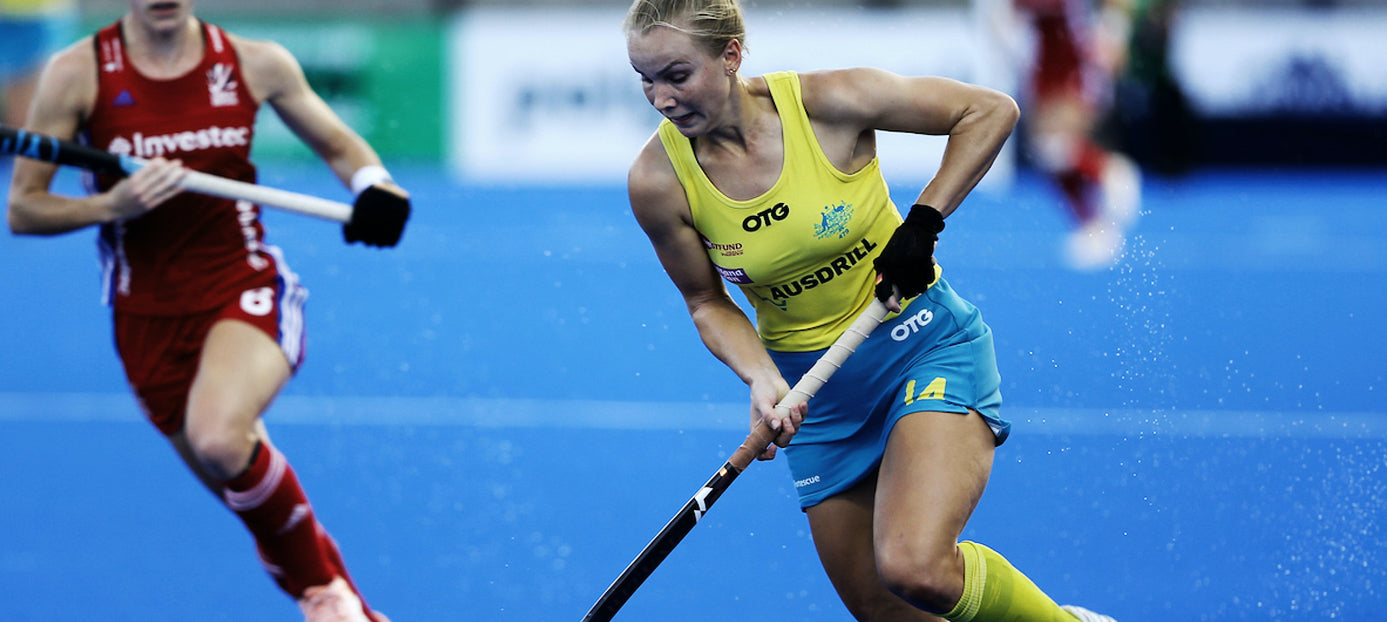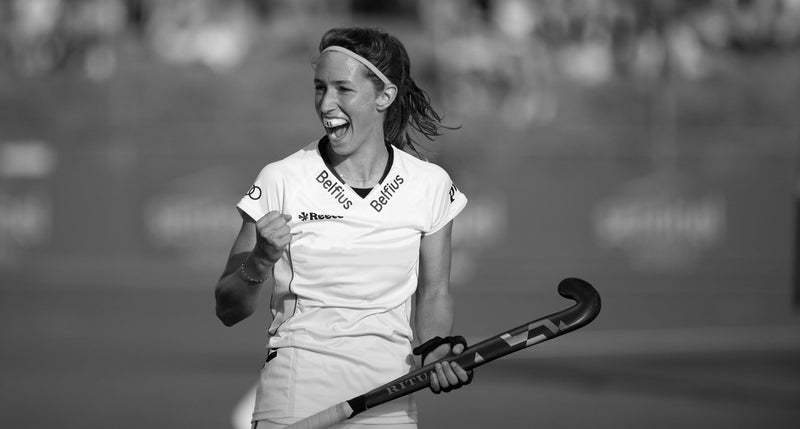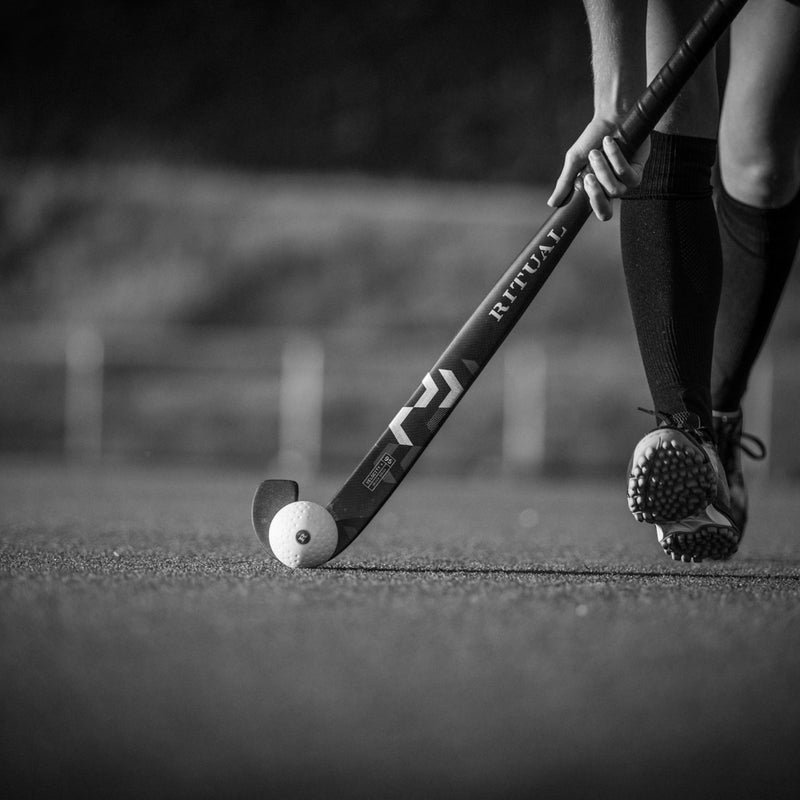A View from the Inside- Steph Kershaw talks injuries, rehab and 2020
By Sabbie Heesh
“Non ho mai scelto la via più facile”
Un marchio australiano, Ritual, che sostiene una giocatrice australiana — ha perfettamente senso. Steph Kershaw, Hockeyroo, fa parte di #teamritual da quattro anni, viaggiando e gareggiando con Hockey Australia in tutto il mondo. Ma non è sempre stato tutto facile. Abbiamo incontrato Steph per scoprire com’è stato affrontare un anno personale difficile, il 2019, e il devastante impatto del COVID-19 nel 2020.
Infortunio al legamento crociato anteriore (ACL)
L’anno scorso (2019) è stato un anno che speravo passasse in fretta. Dopo aver completato una dura preparazione durante le vacanze di Natale 2018, mi sono strappato il secondo legamento crociato anteriore il sabato della prima settimana di allenamento. Questo mi ha lasciato completamente devastato e abbattuto, dato che avevo già subito lo stesso infortunio nel 2016. Sapevo che il 2019 sarebbe stato una lunga e dura lotta, fisica e mentale, per tornare al 100%.
Riabilitazione
"Quando si pensa alla riabilitazione, spesso si crede erroneamente che sia una sorta di pausa sia fisica che mentale."
Nei primi quattro mesi dell’anno ho guardato i miei compagni e amici allenarsi ogni giorno e partire ogni due settimane per la Pro League, mentre io stavo a bordo campo. Ero in palestra quasi tutti i giorni, cercando di rafforzare non solo il ginocchio ma tutto il corpo: bicipiti femorali, quadricipiti, parte superiore e core. Sapevo che tutto questo mi avrebbe aiutato a tornare più forte come atleta e giocatrice di hockey, ma ad essere sincera, è stato davvero difficile. Volevo solo giocare a hockey e scendere in campo con le Hockeyroos. Mi ha fatto soffrire molto.
When people think about rehab, they have this misconception that you get a bit of a break, both physically and mentally. I can confirm that it’s completely the opposite. You not only have to complete your individual rehab session, you also have to attend each group session to help the team in any way you can. There were days I would arrive for training for a 7:00am start and leave my gym session at 4:00pm with my body and mind absolutely exhausted.
Mi è stato detto che avrei potuto tornare a casa per parte della riabilitazione, ma sapevo che sarebbe stata la strada più facile. Non ho mai scelto la via facile. Sapevo che dovevo affrontare i giorni duri e dolorosi per tornare a giocare, e ciò che mi ha spinto ad andare avanti era sapere che non poter più giocare per l’Australia sarebbe stato molto peggio di infortunio e riabilitazione. Con questo in mente, ho lavorato duramente per oltre dodici mesi per tornare a giocare con le Hockeyroos nel 2020.
Anche se le richieste fisiche erano impegnative, la parte più difficile per me è stata allenarmi ogni giorno sapendo di essere ancora lontano dal tornare a giocare a hockey. Durante la riabilitazione mi sono concentrato molto sull’aspetto mentale dell’essere un atleta d’élite. Ho dovuto superare la paura di farmi di nuovo male e creare invece una mentalità in cui mi fidassi del mio corpo e delle sue capacità. Questo lavoro è molto sottovalutato e non è visibile a nessuno tranne che a te stesso, ma credo che il lavoro mentale sia stato uno degli aspetti chiave che mi ha aiutato a raggiungere i miei obiettivi di riabilitazione e tornare al 100%.
Dopo tutto il lavoro noioso dietro le quinte, sono stata selezionata per giocare la prima partita del 2020 con le Hockeyroos a Sydney. Ero al settimo cielo per la notizia, ma ho provato anche un senso di sollievo e orgoglio per aver raggiunto il mio obiettivo annuale.
2020
“Il mondo dell’hockey è stato completamente stravolto”
Il primo mese del 2020 è stato ottimo. Le Hockeyroos si stavano allenando bene come gruppo, migliorando in alcuni aspetti e continuando a crescere in altri. Tutte stavamo raggiungendo nuovi record fisici e le prime partite di Pro League hanno mostrato che la squadra era sulla strada giusta.
Personalmente mi stavo allenando bene e stavo tornando in forma, poi è successo qualcosa che nessuno si aspettava.
Entra il coronavirus. Una situazione prima impensabile che ha fermato non solo l’hockey internazionale, ma anche quello di club, tutto l’hockey e la vita quotidiana — in tutto il mondo. Abbiamo assistito a conseguenze inimmaginabili, alla tragica perdita di vite umane e anche di mezzi di sostentamento.
Anche lo sport è stato colpito. Nel giro di tre giorni il programma di Hockey Australia è stato sospeso, il Comitato Olimpico Australiano ha ritirato la squadra australiana dalle Olimpiadi 2020, e poi le stesse Olimpiadi sono state rinviate a data da destinarsi. Il mondo dell’hockey è stato completamente stravolto.
People had expected 2020 to be a great year for our sport. To have hockey come to a complete stop was jarring. Everyone was speculating that the Olympics might be cancelled altogether, which would have been the worst outcome for athletes. We had been preparing for the last four years for this one event. The idea that our preparation might come to nothing was heartbreaking.
Fortunatamente, solo pochi giorni dopo sono state comunicate le nuove date delle Olimpiadi di Tokyo e tutti hanno tirato un sospiro di sollievo: il sogno era ancora vivo. Ora la sfida è doppia: prepararsi mentalmente per altri dodici mesi e arrivare al top in un mondo che è cambiato radicalmente.
Allenamento in isolamento
Although the goal of Olympic success is still the same, training these days looks a little different and a little lonelier. We (the Hockeyroos) have gone from training together on the pitch to running solo, and our strength sessions have gone from the lucky situation of having a gym with endless equipment to finding whatever weights we can to use in our garages.
Come australiano, sono molto fortunato perché ci sono tanti spazi aperti, bellissimi parchi, spiagge e sentieri che posso usare per le mie sessioni di corsa. Posso ancora fare un tuffo veloce nell’oceano e prendere un caffè da asporto senza infrangere le regole di distanziamento sociale. Ma più spesso, Netflix e università da casa sono dove passo la maggior parte del mio tempo. Sono tempi strani e difficili per tutti, ma sapere che restare a casa salva vite rende un po’ più facile accettare e apprezzare questo mio nuovo stile di vita più lento. Mi rende ancora più entusiasta e determinato per il 2021 e per ciò che arriverà dall’hockey.
So, here’s to getting through this pandemic together and a big year to come in 2021!
Steph Kershaw, 2020






